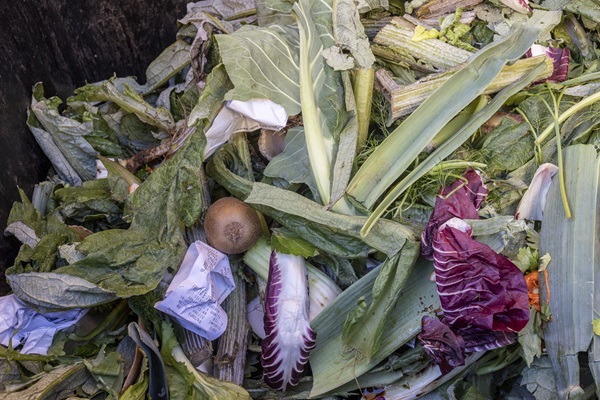
Rome – Tackling the scourge of food loss and waste represents a triple win opportunity - for the climate, for food security, as well as for the sustainability of our agrifood systems - and cannot be put on the backburner at a time of rising global hunger and surging food prices.
The third International Day of Awareness of Food Loss and Waste was marked today by a call to action at a global virtual event in Rome organized by the Food and Agriculture Organization of the United Nations (FAO) and the UN Environment Programme (UNEP).
The gathering took place at a critical juncture: The prolonged COVID-19 pandemic, the growing impact of the climate crisis, and the war in Ukraine, have all contributed to a deterioration in global food security and nutrition.
According to FAO’s latest report on The State of Food Security and Nutrition in the World (SOFI), the number of people affected by hunger rose to as much as 828 million in 2021, an increase of about 46 million since 2020 and 150 million since 2019. In all, an estimated 3.1 billion people do not have access to a healthy diet.
Meanwhile, according to FAO’s State of Food and Agriculture (2019) report, around 14 percent of the world's food (valued at $400 billion per year) continues to be lost after it is harvested and before it reaches the shops; while UNEP’s Food Waste Index Report shows that a further 17 percent of our food ends up being wasted in retail and by consumers, particularly in households. According to FAO estimates, the food that is lost and wasted could feed 1.26 billion hungry people every year.
Food loss and waste (FLW) also account for 8-10 percent of global greenhouse gas emissions (GHGs), contributing to an unstable climate and extreme weather events such as droughts and flooding. These changes negatively impact crop yields, potentially reduce the nutritional quality of crops and cause supply chain disruptions.
Prioritizing the reduction of food loss and waste is therefore critical for the transition to sustainable agrifood systems that improve the efficient use of natural resources, lessen their impact on the planet and ensure food security and nutrition.
“We need collective action to scale up efforts to reduce food loss and waste while reducing greenhouse gas emissions,” FAO Director General QU Dongyu said. “Let us continue to work together in an efficient, effective and coherent manner to raise awareness for and to stop food loss and waste. For healthy people and a healthy planet.”
Call to action
The event in Rome also saw messages from Pope Francis and UN Deputy Secretary-General Amina J. Mohammed, as well as a keynote speech from Danish Agriculture Minister Rasmus Prehn.
Experts from around the world then took part in a panel discussion entitled Generating climate benefits for people and the planet through food loss and waste reduction.
The event made a clear call to action for public and private entities from across the agrifood system to act now to measure and reduce FLW and shift consumer behaviour to urgently cut food waste.
This requires the development and implementation of national strategies, policies and partnerships designed to accelerate action to reduce food loss and waste. Stakeholders at all levels also have a key role to play. These include the farming community, actors along the food supply chain, research and academia, as well as “each one of us as a consumer,” Qu said.
“We each waste on average 74 kilograms of food every year, in middle-income countries as well as in high-income countries,” said Inger Andersen, UNEP Executive Director. “Halving food waste and cutting food loss is an important part of efforts to address the urgent climate and food crises.”
Food is never waste. By applying circular practices, for instance, lost and wasted food can be converted to compost, or used to produce biogas, thereby avoiding harmful methane emissions.
New pledge
The 2030 Agenda for Sustainable Development calls for the halving of per-capita global food waste at the retail and consumer levels and the reduction of food losses along production and supply chains, including post-harvest losses (SDG target 12.3). Achieving this target would have significant implications for the fight against climate change.
Ahead of the upcoming 2022 United Nations Climate Change Conference (COP27), members of the Food is Never Waste Coalition, formed to push forward the agenda of the Food Systems Summit 2021, developed a Global Food Loss and Waste Pledge calling on governments, businesses and institutions to make voluntary commitments to reduce FLW in order to accelerate progress towards meeting the SDG target.
“With only eight years left to reach the SDG 12.3 target of halving food waste by 2030 and reducing food losses by at least 25 percent, the pace of actions must increase,” said UN Deputy Secretary-General Amina J. Mohammed.
Definitions
Food loss, as reported by FAO in the State of Food and Agriculture (2019) occurs from post-harvest up to - but not including - the retail level.
Food waste, as reported by UNEP in the UNEP Food Waste Index Report, occurs at retail, food service and consumer level.
Food is lost and wasted in many ways. For example: